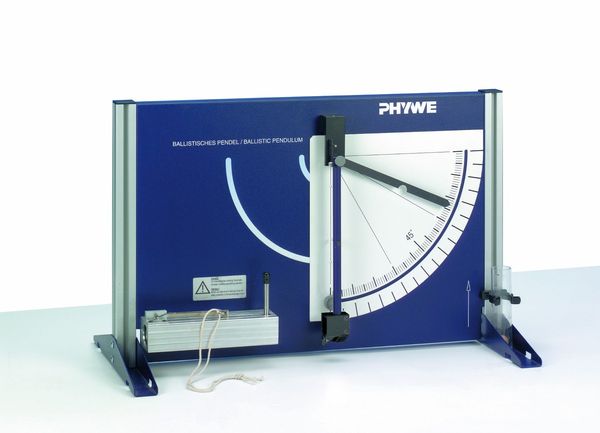setTimeout(function(){
window.print();
},500)

Technical data Ballistic pendulumArticle no: P2131200  Principle A classic method of determining the velocity of a projectile is to shoot it into a resting mass hung as a pendulum. The projectile remains in the pendulum and swings with it. This is an inelastic collision in which the momentum remains unchanged. The velocity of the pendulum's mass (including the projectile's mass) at the lowest point of the pendulum can be derived from the amplitude of the pendulum's oscillation. Additionally to the set-up, two light barriers and a time measuring device are available for an independent, direct measurement of the initial velocity of the ball. Benefits
Tasks Measure the amplitude of the pendulum for three different initial velocities of the shot ball. Learning objectives
Scope of delivery
| ||||||||||||
PHYWE Systeme GmbH & Co. KG
Robert-Bosch-Breite 10 – 37079 Göttingen – Germany
www.phywe.com
Robert-Bosch-Breite 10 – 37079 Göttingen – Germany
www.phywe.com

